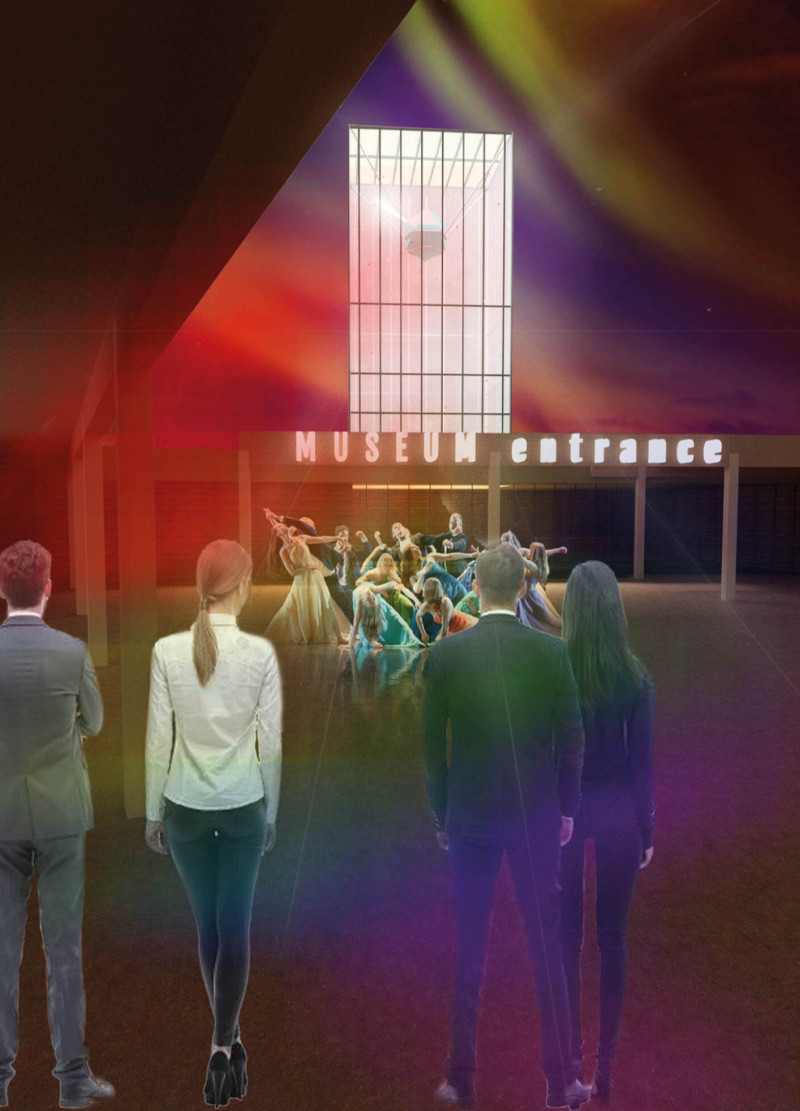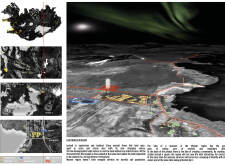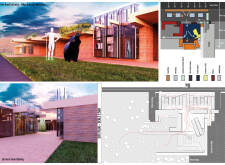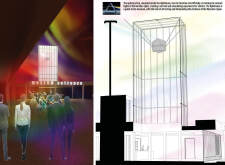5 key facts about this project
Architecturally, the design employs a modular approach, facilitating rapid construction and adaptability. A mix of load-bearing walls and structural pillars provides the necessary durability against harsh weather conditions prevalent in the region. The building's footprint includes multiple functional spaces with clear circulation paths, fostering accessibility for all users.
The museum features a prominent entrance defined by large glass panels that create a sense of openness and transparency. This approach not only invites natural light into the space but also forms a direct visual connection with the external environment. Internal spaces include exhibition halls, workshops, and community gathering areas, each specified for different educational and social activities.
The unique aspect of the Lighthouse Museum is its central lighthouse structure, which houses an optical prism designed to replicate the Northern Lights. This design element serves both functional and aesthetic purposes, creating immersive lighting experiences that enhance visitor engagement. The interaction between light and space within the museum promotes exploration and encourages local cultural narratives to be expressed artistically.
The selection of materials reflects a commitment to sustainability and local context. Predominantly, wood is used throughout the interior and exterior, providing warmth and linking the building to its natural environment. Glass elements ensure a continuous dialogue between inside and outside, maintaining a connection with the stunning landscapes of Myvatn. Steel contributes to the structural integrity of the lighthouse, while concrete forms the foundation, securing the building against environmental challenges.
The design outcomes of the Lighthouse Museum include a cohesive integration of architecture and landscape, resulting in a functional space that serves community needs and fosters cultural appreciation. Such an approach emphasizes the importance of architectural design in enhancing local identity and heritage.
For additional insights, explore the architectural plans, architectural sections, and architectural designs related to this project. Understanding the various architectural ideas implemented can further illuminate the unique design approaches taken to realize the objectives of the Lighthouse Museum.


























